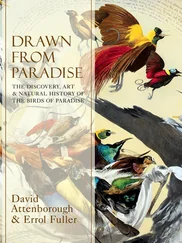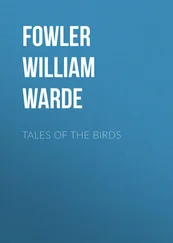William Fowler - A Year with the Birds
Здесь есть возможность читать онлайн «William Fowler - A Year with the Birds» — ознакомительный отрывок электронной книги совершенно бесплатно, а после прочтения отрывка купить полную версию. В некоторых случаях можно слушать аудио, скачать через торрент в формате fb2 и присутствует краткое содержание. Жанр: foreign_antique, foreign_prose, на английском языке. Описание произведения, (предисловие) а так же отзывы посетителей доступны на портале библиотеки ЛибКат.
- Название:A Year with the Birds
- Автор:
- Жанр:
- Год:неизвестен
- ISBN:нет данных
- Рейтинг книги:4 / 5. Голосов: 1
-
Избранное:Добавить в избранное
- Отзывы:
-
Ваша оценка:
- 80
- 1
- 2
- 3
- 4
- 5
A Year with the Birds: краткое содержание, описание и аннотация
Предлагаем к чтению аннотацию, описание, краткое содержание или предисловие (зависит от того, что написал сам автор книги «A Year with the Birds»). Если вы не нашли необходимую информацию о книге — напишите в комментариях, мы постараемся отыскать её.
A Year with the Birds — читать онлайн ознакомительный отрывок
Ниже представлен текст книги, разбитый по страницам. Система сохранения места последней прочитанной страницы, позволяет с удобством читать онлайн бесплатно книгу «A Year with the Birds», без необходимости каждый раз заново искать на чём Вы остановились. Поставьте закладку, и сможете в любой момент перейти на страницу, на которой закончили чтение.
Интервал:
Закладка:
The Robins, I need not say, are everywhere; but there are certain kinds of birds for which we must look out in particular places. I mentioned Parsons’ Pleasure just now; and we may take it very well as a starting-point, offering as it does, in a space of less than a hundred yards square, every kind of supply that a bird can possibly want; water, sedge, reeds, meadows, gravel, railings, hedges, and trees and bushes of many kinds forming abundant cover. In this cover, as you walk along the footpath towards the weir, you will very likely see a pair of Bullfinches. They were here the greater part of last winter, and are occasionally seen even in college and private gardens; but very rarely in the breeding-season or the summer, when they are away in the densest woods, where their beautiful nest and eggs are not too often found. Should they be at their usual work of devouring buds, it is well worth while to stop and watch the process; at Parsons’ Pleasure they can do no serious harm, and the Bullfinch’s bill is not an instrument to be lightly passed over. It places him apart from all other common English birds, and brings him into the same sub-family as the Crossbill and the Pine-Grosbeak. It is short, wide, round, and parrot-like in having the upper mandible curved downwards over the lower one, and altogether admirably suited for snipping off and retaining those fat young juicy buds, from which, as some believe, the Bullfinch has come by his name. 1 1 The name is sometimes said to be a corruption of bud-finch . But Prof. Skeat ( Etym. Dict. , s. v. Bull ) compares it with bull-dog , the prefix in each case suggesting the stout build of the animal.
Parsons’ Pleasure, i. e. the well-concealed bathing-place which goes by this name, stands at the narrow apex of a large island which is formed by the river Cherwell, – itself here running in two channels which enclose the walk known as Mesopotamia, – and the slow and often shallow stream by which Holywell mill is worked. The bird-lover will never cross the rustic bridge which brings him into the island over this latter stream, without casting a rapid glance to right and left. Here in the summer we used to listen to the Nightingale, or watch the Redstarts and Flycatchers in the willows, or feast our eyes with the splendid deep and glossy black-blue of the Swallow’s back, as he darted up and down beneath the bridge in doubtful weather. And here of a winter morning you may see a pair of Moorfowl paddling out of the large patch of rushes that lies opposite the bathing-place on the side of the Parks; here they breed in the summer, with only the little Reed-warblers as companions. And here there is always in winter at least a chance of seeing a Kingfisher. Why these beautiful birds are comparatively seldom to be seen in or about Oxford from March to July is a question not very easy to answer. The keeper of the bathing-place tells me that they go up to breed in ditches which run down to the Cherwell from the direction of Marston and Elsfield; and this is perhaps borne out by the discovery of a nest by a friend of mine, then incumbent of Woodeaton, in a deserted quarry between that village and Elsfield, fully a mile from the river. One would suppose, however, that the birds would be about the river, if only to supply their voracious young with food, unless we are to conclude that they feed them principally with slugs and such small-fry. Here is a point which needs investigation. The movements of the Kingfisher seem to be only partly understood, but that they do migrate, whether for short or long distances, I have no doubt whatever. 2 2 See Mr. Seebohm’s British Birds , vol. ii. p. 345.
On the Evenlode, another Oxfordshire river, which runs from Moreton-in-the-Marsh to join the Isis at Eynsham, they are rarely to be seen between March and September, or August at the earliest, while I seldom take a walk along the stream in the winter months without seeing one or more of them.
This bird is one of those which owe much to the Wild Birds Act, of which a short account will be found in Note A Конец ознакомительного фрагмента. Текст предоставлен ООО «ЛитРес». Прочитайте эту книгу целиком, купив полную легальную версию на ЛитРес. Безопасно оплатить книгу можно банковской картой Visa, MasterCard, Maestro, со счета мобильного телефона, с платежного терминала, в салоне МТС или Связной, через PayPal, WebMoney, Яндекс.Деньги, QIWI Кошелек, бонусными картами или другим удобным Вам способом.
, at the end of this volume. It may not be shot between March and August, and though it may be slaughtered in the winter with impunity, the gun-licence and its own rapid flight give it a fair chance of escape. Formerly it was a frequent victim:
By green Rother’s reedy side
The blue Kingfisher flashed and died.
Blue is the prevailing tint of the bird as he flies from you: it is seldom that you see him coming towards you; but should that happen, the tint that you chiefly notice is the rich chestnut of the throat and breast. One Sunday morning, as I was standing on the Cherwell bank just below the Botanic Garden, a Kingfisher, failing to see me, flew almost into my arms, shewing this chestnut hue; then suddenly wheeled, and flashed away all blue and green, towards Magdalen Bridge. I have seen a Kingfisher hovering like a dragon-fly or humming-bird over a little sapling almost underneath the bridge by which you enter Addison’s Walk. Possibly it was about to strike a fish, but unluckily it saw me and vanished, piping shrilly. The sight was one of marvellous beauty, though it lasted but a few seconds.
One story is told about the Kingfisher, which I commend to those who study the varying effects of colours on the eye. Thompson, the famous Irish naturalist, was out shooting when snow was lying on the ground, and repeatedly saw a small brown bird in flight, which entirely puzzled him; at last he shot it, and found it to be a Kingfisher in its full natural plumage. 3 3 Mr. O. V. Aplin, of Banbury, tells me that he has heard it stated that if you shoot a Kingfisher, and it falls on the snow, you cannot see it .
Can it be that the swift flash of varying liquid colour, as the bird darts from its perch into the water, is specially calculated to escape the eye of the unsuspecting minnow? It nearly always frequents streams of clear water and rather gentle flow, where its intense brightness would surely discover it, even as it sits upon a stone or bough, if its hues as seen through a liquid medium did not lose their sheen. But I must leave these questions to the philosophers, and return to Parsons’ Pleasure.
The island which I have mentioned is joined to Mesopotamia by another bridge just below the weir; and here is a second post of observation, with one feature that is absent at the upper bridge. There all is silent, unless a breeze is stirring the trees; here the water prattles gently as it slides down the green slope of the weir into the deep pool below. This motion of the water makes the weir and this part of the Cherwell a favourite spot of a very beautiful little bird, which haunts it throughout the October term. 4 4 In 1885 Gray Wagtails were much less common in the south than in 1884; at the present time (Oct. 1886) they are again in their favourite places ( see Frontispiece).
All the spring and early summer the Gray Wagtail was among the noisy becks and burns of the north, bringing up his young under some spray-splashed stone, or the moist arch of a bridge; in July he comes southwards, and from that time till December or January is constantly to be seen along Cherwell and Isis. He is content with sluggish water if he can find none that is rapid; but the sound of the falling water is as surely grateful to his ear as the tiny crustaceans he finds in it are to his palate. For some time last autumn (1884) I saw him nearly every day, either on the stonework of the weir, or walking into its gentle water-slope, or running lightly over the islands of dead leaves in other parts of the Cherwell; sometimes one pair would be playing among the barges on the Isis, and another at Clasper’s boat-house seemed quite unconcerned at the crowd of men and boats. It is always a pleasure to watch them; and though all Wagtails have their charm for me, I give this one the first place, for its matchless delicacy of form, and the gentle grace of all its actions.
Интервал:
Закладка:
Похожие книги на «A Year with the Birds»
Представляем Вашему вниманию похожие книги на «A Year with the Birds» списком для выбора. Мы отобрали схожую по названию и смыслу литературу в надежде предоставить читателям больше вариантов отыскать новые, интересные, ещё непрочитанные произведения.
Обсуждение, отзывы о книге «A Year with the Birds» и просто собственные мнения читателей. Оставьте ваши комментарии, напишите, что Вы думаете о произведении, его смысле или главных героях. Укажите что конкретно понравилось, а что нет, и почему Вы так считаете.












